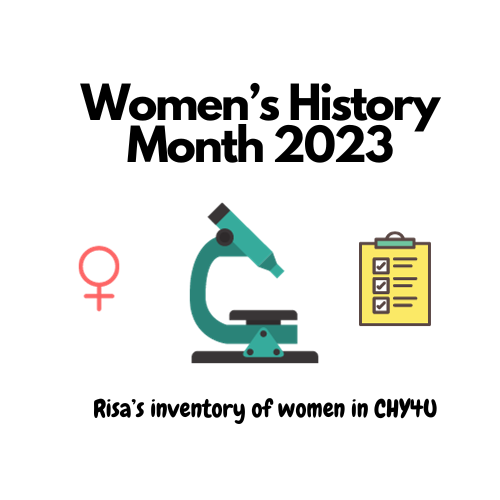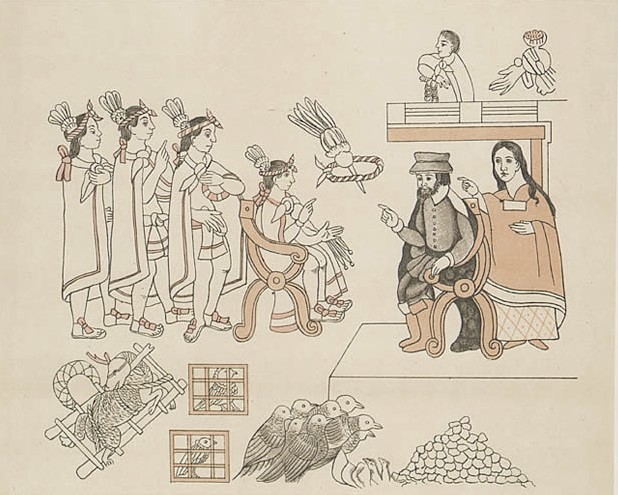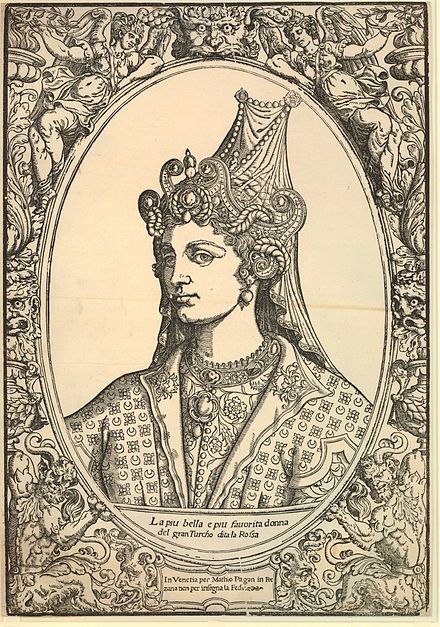As a beginning painter I am super self-critical. This often paralyzes me and causes me to take forever to finish paintings. Sometimes I rob myself of enjoyment of this hobby – this seems counterintuitive!
Similarly in teaching, because my time is divided between student success and world history, I have to learn to curb my penchant for self-criticism.
One area where I constantly question if I am doing enough is inclusion of women in history.
Today I’ll examine areas of my CHY4U course that focus on women. October (when this post was initially written in 2023) )also happens to be women’s history month. Here we go… I’ll put myself under the microscope.

I was provoked to explore the theme of women in my course by a book review I read by Sarah Bakewell in the New York Times Book Review. She was comparing two recent books about George Orwell [1], one being Anna Funder’s Wifedom: Mrs. Orwell’s Invisible Life. Bakewell quotes Funder on her approach to writing about Orwell’s first wife, Eileen O’Shaughnessy:
“I wanted to make her live…and at the same time to reveal the wicked magic trick that had erased her [from previous biographies].”
…
“Biographers of men often do it unconsciously by expressing actions in passive or impersonal constructions, so that houses are rented and furnished, and literary parties are held. Authors’ manuscripts apparently type themselves and edit themselves, or even suggest beneficial improvements to themselves. The women behind these miracles are unnamed and unseen.”
As a world history teacher, I constantly worry that I am perpetuating the disappearance of women from history. Of course history has largely been written by men, meaning women’s voices and experiences have often been omitted. However, this is 2023 and there’s no shortage of information and creative ways to study women.
Even though I want to do my best for students, I cannot spend my entire life revising my courses. So, I decided to do an inventory of women in CHY4U and to focus on one or two assignments that I can improve on an ongoing basis (not all of them!).
Inventory
In unit one (“what were they thinking?”, 1450-1650), women are included here and there. The one woman who gets more attention is La Malinche, the Indigenous translator for Spanish Conquistador Hernan Cortes in Mexico. She makes for a very interesting subject precisely because there isn’t actually a huge amount known about her, especially in her own words. What was contemporaneously written about her of course was by men. Through historiography, students can come to appreciate the ways historical portrayals of women change over time – she has been variously seen as a traitor and a hero and everything in between.

I also used to have a very good activity on Malleus Maleficarum, the Hammer of Witches (1486), a very significant book about sorcery which was intended to be used by Catholic Church inquisitors in their work seeking out and prosecuting such supposed heretics, especially uneducated women. This lesson helped students understand the crucial context of the Christian doctrine of original sin [2] and its egregious biases toward women. Unfortunately, I omitted this topic a few years ago to make room for more decolonized materials.
In the culminating activity for unit 1 (Global Gathering) I currently include only one woman as a topic choice – obviously that has to be remedied. Please check out this video about this assignment as it is one of my favourites and it can be easily updated!
Don’t forget to watch the VIDEO!
Unit 1 curriculum expectations relevant to women are: B1.1, B3.2
In unit 2 (“what was worth fighting for?”, 1650-1789) I added an opportunity to learn about a non-western woman – Roxelana – who was the wife of Suleiman the Magnificent. Living in the 16th century she obviously doesn’t belong in this unit; however, here’s how I justify her inclusion: I created a lesson to follow up on the western enlightenment that questions whether Europeans had a monopoly on so-called enlightenment. In this lesson students inquire into the lives of Akbar the Great and Suleiman. I suppose seeing Roxelana as an added bonus is not really appropriate. She should be more front and centre. I think it’s fair to be self-critical here; despite my intent, I could be sending the wrong message.

In this unit I also introduce students to the origins of industrialization and thus to women working in cotton mills and coal mines. I have discovered over the years that many students don’t understand that women have always worked. Despite it being 2023, some students still come to world history with a naïve view of women not working outside the home until recently. However, I have once again significantly reduced this topic over the years to make way for more non-western content in the course.
Unit 2 curriculum expectations relevant to women are: C1.1, C1.2, 2.2
In unit 3 (“What Re-Shaped the World”, 1789-1900) I feel there’s more emphasis on women. Firstly, in the French Revolution lessons I have a whole section devoted to women. I have deliberately chosen to make it the last lesson within the revolution topic. After learning how women didn’t receive the same rights as men (though they of course still fought for them), students get to tell me if they think the female aspect should be integrated into the topic as a whole or kept separate. Year after year students tell me it has more impact being separate (as I intended). We examine a primary source document by Olympe de Gouges. Last year my students did an incredible job analyzing.

Also in this unit I have a lesson on the 19th and early 20th century fight for women’s suffrage and step by step modernization of social and economic status. It’s pretty western-oriented, however, I feel it’s very important for students to once again recognize that some of the challenges women faced back then have still not been fully addressed. Because the lesson is based on a timeline of key events it is easily updatable.
Unit 3 curriculum expectations relevant to women are: D1.1, D2.3, D2.5
Here I should say that units 3 and 4 of the course really overlap. As we all know, as we get closer to the end of the course, the focus becomes the course culminating activity. I personally find that the last unit really takes a hit because of this.
In unit 4 (“Are We Any Better?”, 1900-present) I feel there’s a good emphasis on women. Last year, as a bridge between units, I added a lesson called “social movements for equity” that allowed students to research various LGBTQ2+ -related topics to make a more inclusive timeline of recent world history. It still needs more work, but it is a start. I chose four sub-topics and gave starting sources for each: current rights around the world; Nazi Germany; Canada during the Cold War; colonization. The impetus for this assignment was that our school hosted the TDSB’s International Day of Pink celebrations last year and we were all asked to create aligned lessons. I am very glad I was pushed to make this change and am happy to report the feedback was quite positive.

The last assignment in my CHY4U course is “Feminism Comparison.” Here students make a comparison between Chinese and American women – given two timelines – and have to decide whether Chinese or American women’s lives have changed more. It’s an easy assignment for me to update yearly (if I remember!) because I made the timelines myself and can simply do more research to add to each. It also ties into industrialization and globalization themes nicely.
Unit 4 curriculum expectations relevant to women are: E1.1, E1.2, E3.3
Reflections on the Inventory
Seeing this inventory could push me into a deep pang of self-criticism because of the apparent gaps. However, that is not the purpose of the inventory. I’m supposed to be self-critical only to a point. With the course being inquiry-based, it is not difficult to add opportunities for students to explore other women. The difficulty is in finding the time and deciding what to cut.
The incredible scope of time and place is obviously one of the greatest challenges of teaching world history. But women are worth it!!!
[1] Sarah Bakewell, “Mr. and Mrs. Orwell.” Review of two books about George Orwell. New York Times Book Review. September 16-17, 2023.
[2] See this webpage from the British Library, “Women in Medieval Society.” (Note: this page is no longer available. That’s too bad; it was an excellent resource.)